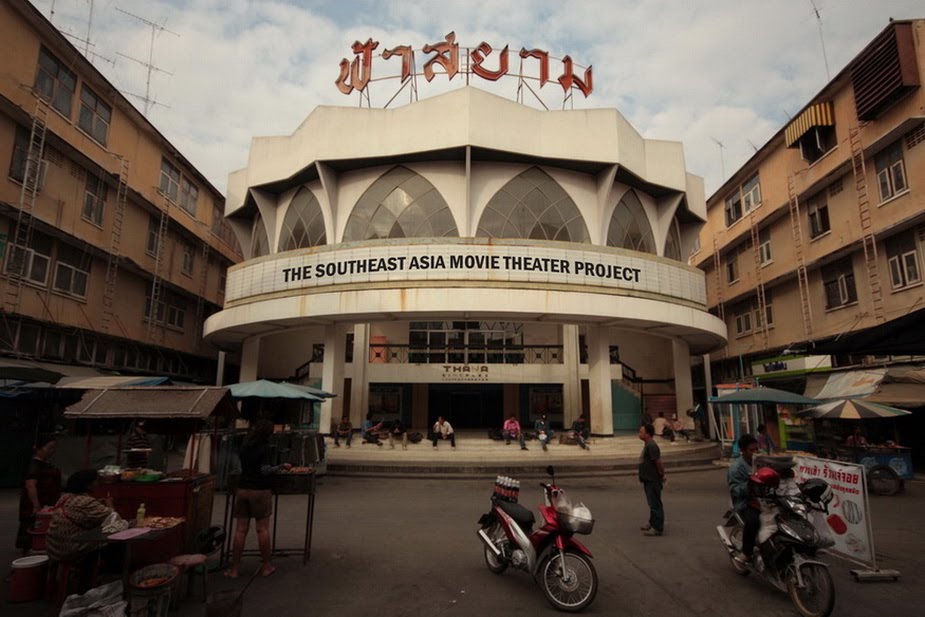"There has to be that interval of neglect, there has to be discontinuity; it is religiously and artistically essential. That is what I mean when I refer to the necessity for ruins: ruins provide the incentive for restoration, and for a return to origins."
- J.B. Jackson, Historian of Vernacular Architecture.
The definition of a "ruin" referred to in the above quote may not be applicable in the case of Shwebo's King Cinema. Ruinous aspects certainly do apply, but most of those are in appearance only. While no longer an operational movie theater, the building is still very much alive.
"King Cinema," written in English, molded onto the back side of the theater.
The front of the King Cinema, with its colonnaded veranda.
The King's worn down look combined with architectural aesthetics that have long been relegated to antiquity do suggest a ruin. Case in point, the entrance area. As with many older cinemas in Myanmar, entrance to the auditorium is accessed through a series of wooden doors situated along the length of the theater. In the case of the King, those doors are set back behind a colonnade, giving the structure an almost regal look, reflective of its name, perhaps.
So while not exactly a ruin in the traditional sense, The King Cinema's neglected vintage makes it a vessel for what J.B. Jackson would call "religiously and artistically essential." Fascinating, to put it simply.
The area behind the colonnade is now used as a staging ground for sacks of dried beans.
For the past 15 years or so, The King Cinema has been serving as a warehouse for a nut and bean distributor. Sacks of legumes awaiting export occupy space that once held rows of benches and beholden cinema goers.
Some interesting architectural details include exposed truss beams and tree trunks for wall supports.
Old wooden chairs of the King Cinema, piled up high to make space for storage.
A man working in for the nut and bean dealer shows off some the goods.
Workers empty sacks of raw beans into a huge pile on a tarp. Once the pile is big enough the tarp will be tied off and put into a container for shipping.
Tree trunk wall supports and other stuff.
The King Cinema was built in 1951.














